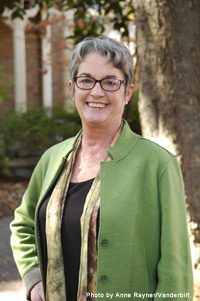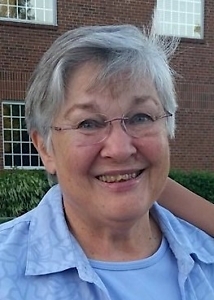Who Spoke for the Negro?
Vanderbilt University’s digitized database of Robert Penn Warren’s conversations with civil-rights activists provides students and scholars with a chance to “listen in” on the movement
In 1930, poet and novelist Robert Penn Warren publicly defended segregation and the racial mores of the South in his contribution to I’ll Take My Stand, a collection of essays by a set of twelve “unreconstructed” Southerners based at Vanderbilt University. By the 1960s, however, Warren had become critical of the institution of segregation. In 1963, he began compiling interviews with prominent civil-rights leaders and activists; he called the project Who Speaks for the Negro? Nearly fifty years later, the Robert Penn Warren Center for the Humanities, also based at Vanderbilt, undertook its own project of digitizing the interviews Warren conducted and making them available to the public through a newly launched website. Mona Frederick, executive director of the Warren Center, recently answered questions from Chapter 16 about the genesis and significance of the collection.
 Chapter 16: When and how did the idea for creating an online archive of the Warren interviews first become something the Warren Center was interested in doing?
Chapter 16: When and how did the idea for creating an online archive of the Warren interviews first become something the Warren Center was interested in doing?
Frederick: In 2006, something came across my desk to remind me of Warren’s volume Who Speaks for the Negro? and caused me to begin to wonder about the original audiotapes and whether they were still in existence. I quickly discovered that they were at Yale and that the University of Kentucky library had previously digitized three or four of the interviews. Why not digitize them all, I thought, and make these rich conversations available to anyone with access to the Internet? I secured permissions from Warren’s children, Rosanna Warren and Gabriel Warren, and so began this journey.
Chapter 16: Was it widely known that these interviews still existed, or was their “discovery” news in itself?
Frederick: I think that a handful of Warren scholars may have been aware of the audiotapes, but since the book has been so long out of print, this was material that was somewhat obscure. I later discovered that the original tapes had been split and that some were at the University of Kentucky as well as those that were at Yale. Neither of those institutions was aware that this had happened. The Vanderbilt library was a critical resource in creating this digital archive. I think this is a wonderful example of cooperative work between libraries in the digital age.
Chapter 16: How much do we know about Warren’s own motivation for undertaking this project? Was it intended purely as a journalistic exercise, or was there also a personal self-awareness on Warren’s part about his own lack of knowledge on what the “Negro” of 1964 believed, or perhaps a general feeling on his part that white Americans as a whole lacked that knowledge?
Frederick: Robert Penn Warren had several reasons for writing this book. In 1930, I’ll Take My Stand was published by members of the Fugitive and Agrarian movement at Vanderbilt. The volume included an essay by Warren on race titled “The Briar Patch.” In it, he argued for separate but equal education for blacks and whites. Although at the time this was a somewhat progressive position, Warren later in life regretted having written the essay with its racist and separationist overtones. “I never read the essay after it was published,” he later wrote in the first few pages of Who Speaks for the Negro?, “and the reason was, I presume, that reading it would, I dimly sensed, make me uncomfortable. In fact, while writing it, I had experienced some vague discomfort.”
 Chapter 16: The website also contains various reactions to the book, including reviews and Warren’s own correspondence. How would you describe the response to the book in 1965? Was it noticeably different across racial groups?
Chapter 16: The website also contains various reactions to the book, including reviews and Warren’s own correspondence. How would you describe the response to the book in 1965? Was it noticeably different across racial groups?
Frederick: Overall, the book was very well received. The Chicago Tribune stated “this is superb documentation, possibly unique in historiography.” The New York Times reviewer proclaimed it “one of the year’s outstanding books.” One reviewer, however, felt that the book was a good idea but had the wrong author, suggesting that Bayard Rustin would have been the right person to write this book.
My favorite review was written by noted African-American critic Albert Murray: “Robert Penn Warren, a white Anglo-Saxon Protestant Southerner, a one-time apologist for segregation, a long-time colleague of the old agrarian romantics and a sometime friend of countless white supremacists and even Dixiecrats, has written a new book which is perhaps the very best inside report on the Negro civil rights movement by anyone so far. In spite of several ridiculous flaws, which are much more characteristic of certain New York indoor intellectuals than of the worldly, realistic and thoughtful son of a hard-headed old Kentucky dirt farmer, Who speaks for the Negro? deserves the widest possible circulation.”
Chapter 16: To get a good feel for what the collection is all about, which interview or interviews do you recommend starting with?
Frederick: The “big brass,” as Warren calls them, are a good start: for example, Martin Luther King Jr. and Malcolm X. I also like the interview with Kenneth Clark, in which the two of them have a near shouting match over the legacy of John Brown: martyr or crazy man? I also think his conversation with Clarie Collins Harvey is illuminating. For local flavor, the James Lawson interview is really interesting, as are the conversations with Kelly Miller Smith, Stephen Wright, and Avon Williams.
Chapter 16: Have any of those who were interviewed in the original project listened to their own interviews recently? If so, what kinds of reactions have they had?
Frederick: The Warren Center hosted a program in 2008 in which we brought back as many of the people that Warren interviewed that we could. Soon the website will have video posted from that program.
Chapter 16: The breadth and scale of this material would make a great resource for teachers and scholars at all educational levels. Are there any efforts underway to promote the collection as a teaching resource in high schools or other colleges around the country?
Frederick: I hope to work with colleagues in the near future to begin to develop curricular guides using this digital archive.
The entire digitized collection of Robert Penn Warren’s interviews—along with correspondence between Warren, his interviewees, publisher, and critics—is available online here.





